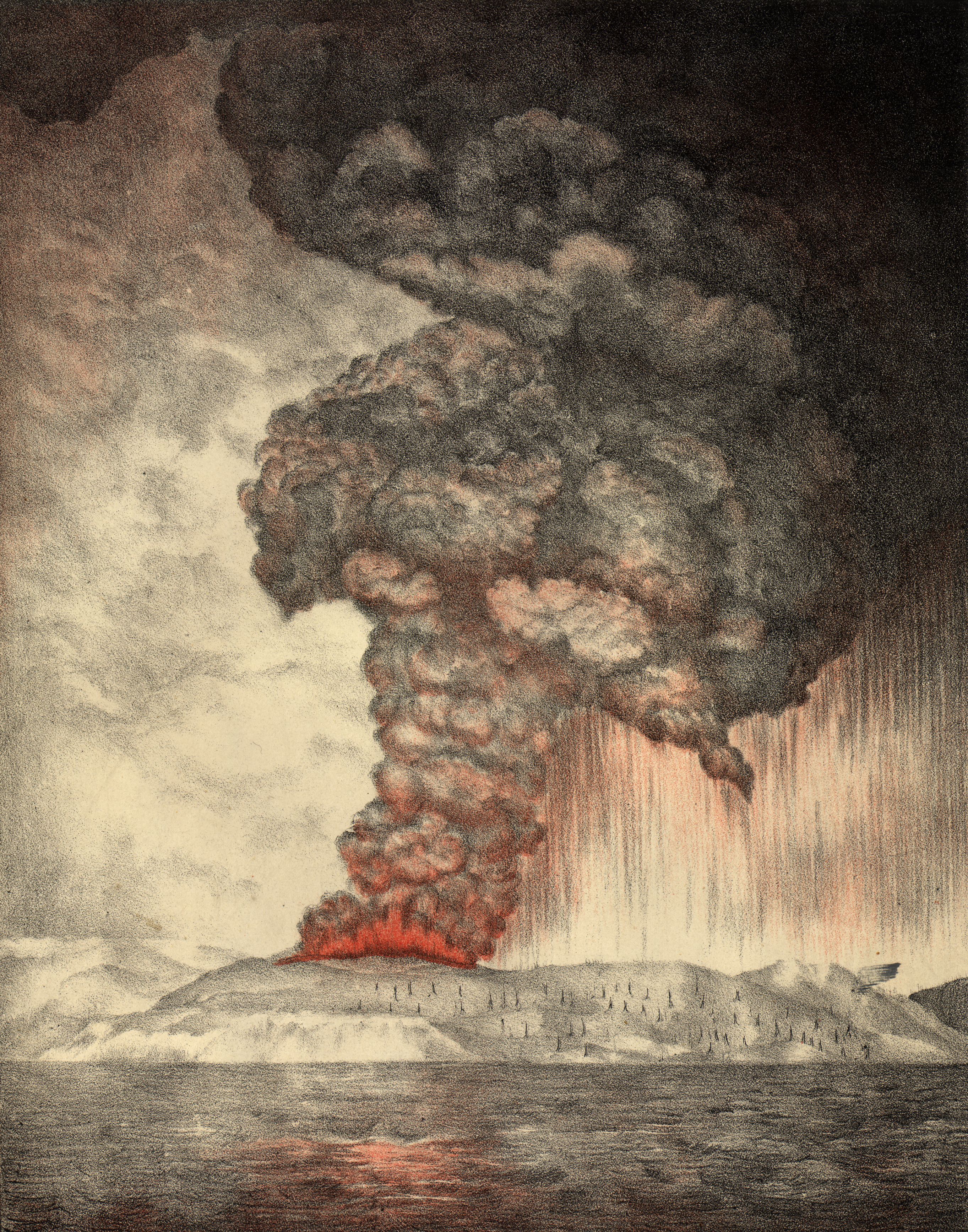Marilynn S. Olson, Donald W. Olson, and Russell L. Doescher, “On the Blood-Red Sky of Munch’s The Scream,” Environmental History 12 (January 2007): 131. For more artists influenced by the eruption, see C. S. Zerefos, V. T. Gerogiannis, D. Balis, S. C. Zerefos, A. Kazantzidis, “Atmospheric effects of volcanic eruptions as seen by famous artists and depicted in their paintings,” Atmospheric Chemistry and Physics, European Geosciences Union, 7 (August 7, 2007).
John Ruskin, “The Storm Cloud of the Nineteenth Century,” in The Seven Lamps of Architecture: also, Lectures on Architecture and Painting; The Study of Architecture; Sesame and Lilies; Unto This Last; The Queen of the Air; The Storm-Cloud of the Nineteenth Century. (Boston: Aldine, 1890), 391.
Seth T. Reno, Early Anthropocene Literature in Britain, 1750-1884 (London: Pallgrave Macmillan, 2020): 104–107.
See Beatriz Colomina, X-Ray Architecture (Zurich: Lars Müller Publishers, 2016); Paul Overy, Air, Light, and Openness (London: Thames & Hudson, 2007).
J. Zappert, “Rickets (rachitis),” in Diseases of Children, ed. A. Jacobo (New York: Appleton, 1910), 12.
Daniel Whistler, De moro pueril anglorum, quem idiomate indigenae vocant The Rickets, Lugduni Batavorum, 1645.
Beatriz Colomina, X-Ray Architecture, 10.
Russell W. Chesney, “Theobald Palm and his remarkable observation: How the Sunshine Vitamin Came to be Recognized,” Nutrients 4 (2012). 45.
T. A. Palm, “The Geographical Distribution and Ætiology of Rickets,” Practitioner 45 (1890). 272.
Palm, 335.
Palm, 274. Emphasis original.
Andrzej Grzybowski and Krzysztof Pietrzak, “From patient to discover—Niels Ryberg Finsen (1860-1904)—the founder of modern phototherapy in dermatology,” Clinics in Dermatology 30, no. 4 (2012): 451–455.
See Tania Anne Woloshyn, “Patients rebuilt: Dr Auguste Rollier’s heliotherapeutic portraits, c.1903–1944,” Medical Humanities 29 (March 2013): 38.
Coincidentally, both were born in two small villages near each other in the Neuchâtel canton, Switzerland. For the connection see Lyra Kilston, Sun Seekers: The Cure of California (Los Angeles: Atelier Éditions, 2019), 63. For more indirect connections between Rollier and Le Corbusier see Richard A. Hobday, “Sunlight Therapy and Solar Architecture,” Medical History 42 (1997).
Tania Anne Woloshyn, Soaking Up the Rays: Light Therapy and Visual Culture in Britain, 1890-1940. (Manchester: Manchester University Press, 2017), 45, fn. 76.
Royal Institute of British Architects, “The Orientation of Buildings,” (London: Royal Institute of British Architects, 1933), 3.
Le Corbusier, The Athens Charter (New York: Grossman, 1973), Article 26.
Richard A. Hobday, “Sunlight Therapy and Solar Architecture,” Medical History 42 (1997): 464.
G. M. Mackee, “Ultraviolet Therapy in Dermatology,” Journal of the American Medical Association 83, no. 18 (1932): 1553–1561.
Casimir Funk, The Vitamines, translated by Harry E. Durbin. (Baltimore: Williams & Wilkins Company, 1922).
For more on the development of dietary vitamin D, see: Philippe Hernigou, Jean Charles Auregan, and Arnaud Dubory, “Vitamin D: part II; cod liver oil, ultraviolet radiation, and eradication of rickets,” International Orthopaedics 43 (2019): 740–742.
Woloshyn, Soaking up the Rays.
Ibid.
John Stanislav Sadar, “The healthful ambiance of Vitaglass: light, glass and curative environment,” Architecture Research Quarterly 12, no. 3/4 (2008): 272.
Sadar, Through the Healing Glass, 11.
Ibid.
Ibid.
Thomas S. Hines, Richard Neutra and the Search for Modern Architecture: A Biography and History (Berkeley, CA: University of California Press, 1994), 96.
Phillip Lovell, “Care for the Body” Los Angeles Times (December 15, 1929).
Likely from Phillip Lovell’s “Care for the Body” column in the LA Times. Quoted in Hines, Richard Neutra and the Search for Modern Architecture, 108.
On Lustraglass see Sadar, Through the Healing Glass, 168.
“‘Test Tube’ School Open,” Los Angeles Times (October 14, 1935). 9.
Richard J. Neutra, “Contemporary Developments of the Unconventional House,” in Greta Grey, House and Home: A Manual and Textbook of Practical House Planning, (Philadelphia: J.B. Lippincott Company, 1935), 194.
Ibid., 194–195.
Sadar, Through the Healing Glass, 15.
Judith A. Quick and Elizabeth W. Murphy eds., “The Fortification of Foods: A Review,” United States Department of Agriculture, Food Safety and Inspection Service, Agricultural Handbook Number 598 (July 1982). 2.
Colomina, 94.
